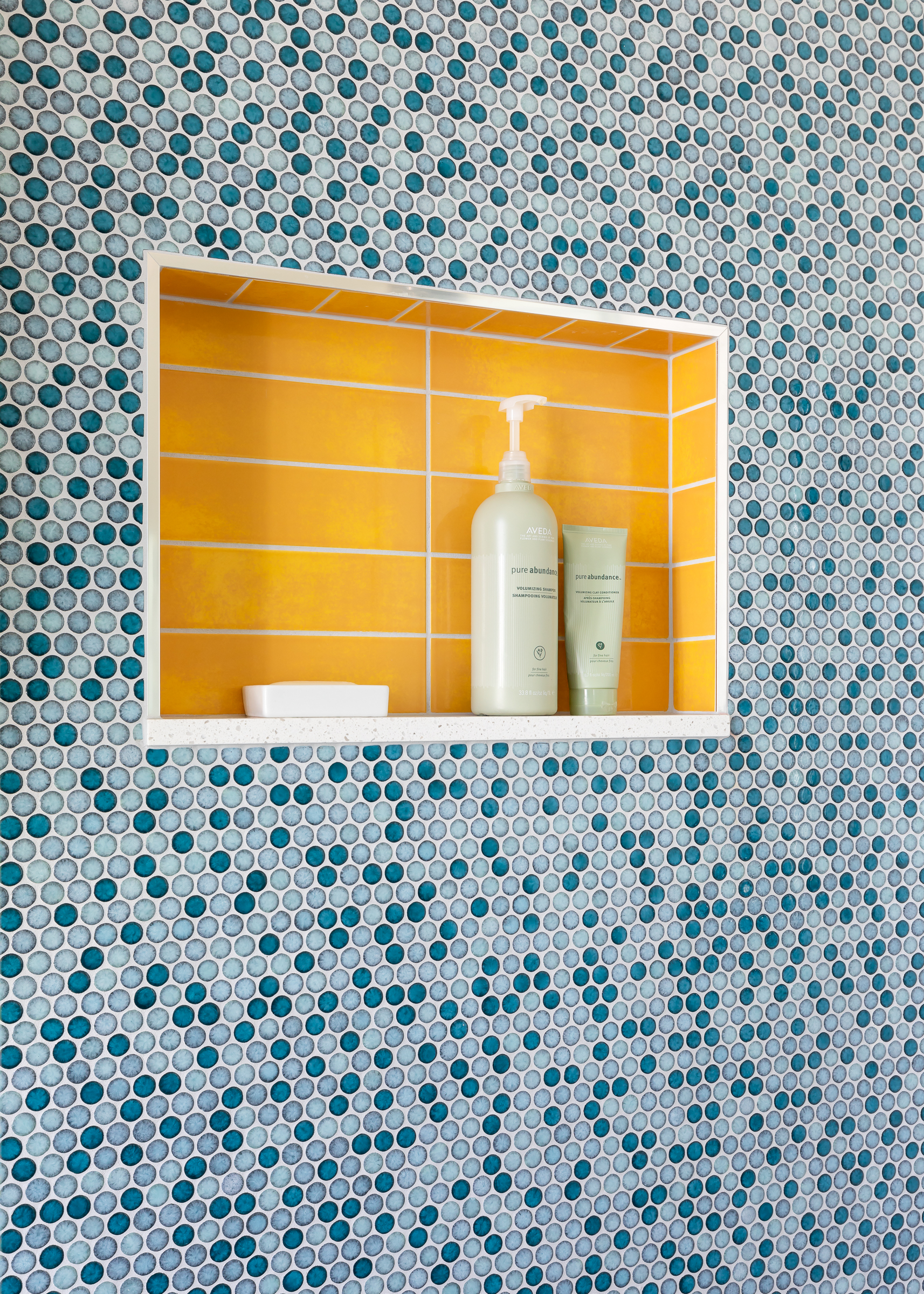What Does It Cost To Furnish A Living Room? Part 2!
What Does It Cost To Furnish A Living Room? Part 2!

Eager to get happy at home right now?
Get 10 tips for a happier home!
In my last post I answered the question “What Does It Cost To Furnish A Living Room?” and shared what it would have cost to purchase the items we selected for this living room, and I promised to take on the challenge of reducing costs even further. I felt confident I could do that because if you’re willing to be a bit flexible (and shop nearly exclusively online) it *is* possible to reduce the cost of nearly any design. The question is just around what you might be giving up as you go lower and lower in cost.
You might remember that the overall cost of the furniture for this living room came to $7,000:
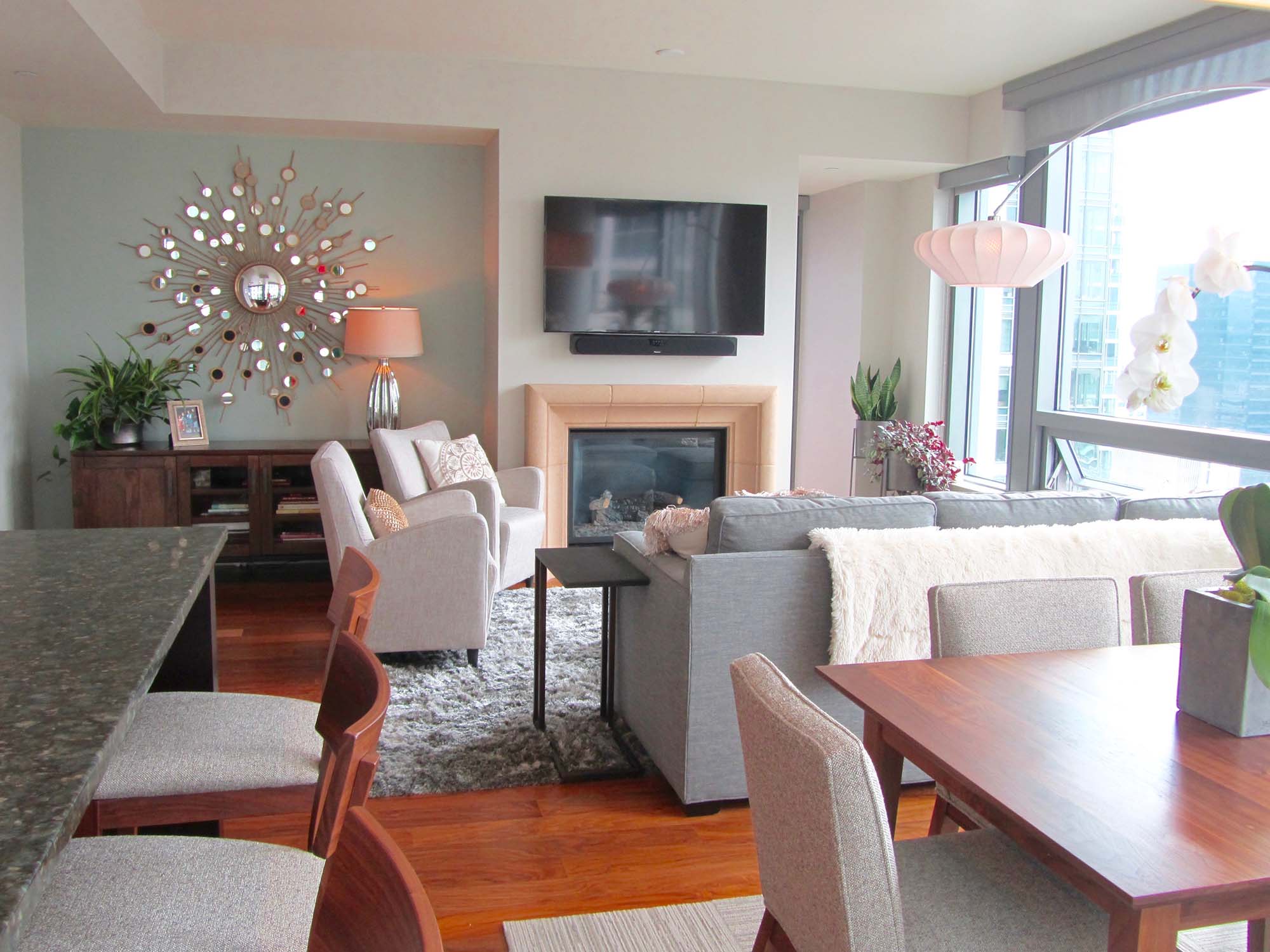
We already sourced some pretty cost-effective options, in particular those $200-a-piece accent chairs from Dania:
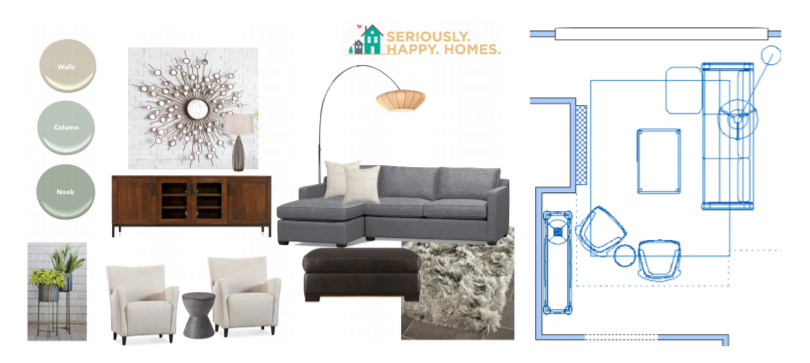
With just a few changes like you see below {*drum roll*} I was able to reduce the cost by $2,500!
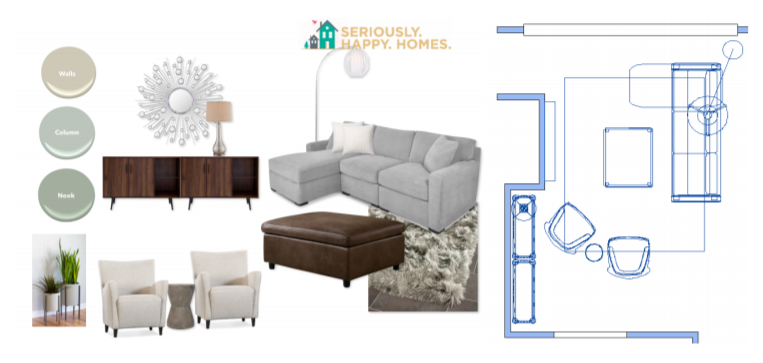
The grand total? About $4,400.
Here’s where I found the most savings:
• Sourcing a sectional from a department store like Macy’s. Good ol’ Macy’s sometimes has screaming deals on furniture, especially around holiday sales (like Memorial Day). They can often send over a sample swatch of the fabric, and *might* even have the model you’re looking at in the store to try out!
• Sourcing smaller pieces instead of one large one: Instead of one large media cabinet, I opted for two smaller ones that can be placed side by side to give that long sideboard vibe. I also sacrificed some of the impact of the starburst mirror over the console – the original was 60” wide, while the $200 less alternative is just 36” wide. It’s important to remember that this *will* have an impact on the final effect!
• Shopping accessories and lighting through online retailers: All accessories are from All Modern and Lamps Plus. Stores that don’t have to maintain a showroom or sales staff can offer lower prices (but that does mean you have to buy-before-you-try).
You’ll notice that I’m using *the same* rug and accent chairs in this budget-version as in the original design. The rug was already a great price and had *fantastic* reviews, so no need to change it! The accent chairs were well priced at $200 each, and they were also the *perfect* size for the room. Scale matters so much and it was unlikely I’d find a good alternative at a lower price, so I didn’t re-source them. Here’s the comparison chart showing the cost of the original elements, the cost of common design elements in this category, and the cost of the budget-alternatives I sourced:
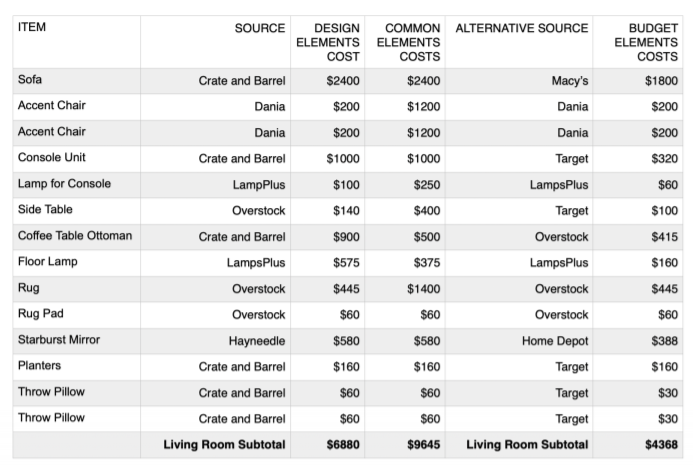
Remember how I mentioned “flexibility” at the top of this post? That’s key! When you’re sourcing wallet friendly options, online shopping can save you big bucks, but there are a few things to keep in mind:
• You don’t get to “try before you buy” – While reviews can note a lot about seating comfort, each
person’s body is different! What’s comfortable for me might not be comfortable for you, so take
those reviews with a grain of salt!
How to solve for that: Take a window shopping trip to furniture stores that have floor models for you to sit in. Places like Room & Board and Crate & Barrel have indicators on their website of how “soft” or “firm” their seating is, so that could give you an indicator of which way you lean generally. I’d also recommend taking a small tape measure with you to measure the seat height and depths that feel most comfortable – especially for folks who are shorter and are worried about dangling legs!
• Colors don’t always translate – We all have been surprised at one point or another when we’ve ordered something online and it shows up looking different than what we expected. This is *especially* true for textiles!
How to solve for that: There are a lot of online retailers that can send you a sample swatch of the fabric (sometimes cost free!). If you feel nervous about the color you see on your screen looking the way you want in person, order a swatch to be sent to your home! That also gives you the opportunity to not only see the fabric in your home’s light, but feel its texture and see what kind of weave it has. Another trick? Order the item that will have the most impact on the overall color in your space, and then work the other items around it after it arrives.
• Sometimes items aren’t a *perfect* match to what you originally imagined – If you really wanted that CB2 leather sofa, but just don’t want to spend $3,000, you might be hard pressed to find another sofa that looks just like it but isn’t as expensive. Same with the floor lamp – the shade isn’t *quite* the same shape and size. Only you can decide if you’ll be as happy with the change, or if it’s a item to spend a little more on so you feel happy with your investment.
How to solve for that: Be sure to reset your expectations and focus on the lines and overall feel of a piece instead of the specific details.
Where to be careful?
As you swap out design elements, be *really* careful not to sacrifice on size/scale. You don’t want to end up with too-small furniture. That’s a rookie mistake that happens a lot when trying to save money, and often results in having a room that never feels quite finished. In this design the new mirror is *significantly* smaller in scale than the original. The original mirror was 60” across – a big focal point in the room. The alternative mirror, $200 less, is just 36” across, nearly half the size, so you’ll end up needing additional accessories to fill the space. This is an example when, in the end, it might *save* you money to spend a little more on the larger (and more costly) item.
The Takeaway?
There are times when we’re okay with spending our hard earned money on quality pieces. There are other times when we want to save that money for other things in our life, either because we have a tighter budget, or other priorities like travel, or paying for college. Whatever your priorities, if you set realistic expectations for yourself and keep an open mind, there isn’t a design you *can’t* put together at any spectrum of a budget! Just keep an eye on scale, and you can use any design as a design map, treasure-hunting your way to a perfect-for-you space.
Need help thinking up layout solutions or sourcing items? We’d love to work with you – just give us a shout!
May your home (and your living room refresh) always be happy!

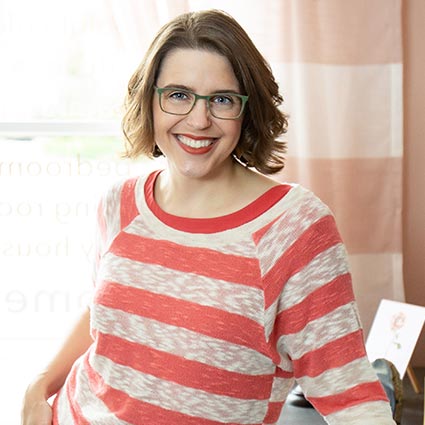
HI, I'M REBECCA WEST!
I’m an interior designer, author, podcaster, speaker, and coach to other designers. (Whew!) But I’m not your classic interior designer because, frankly, I don’t care if you buy a new sofa. I do care if your home supports your goals and feels like “you.” Remember, happy starts at home!
More From Seriously Happy Homes
Are you ready for a seriously happy home?
(Cue the confetti!)

Eager to get happy at home right now?


